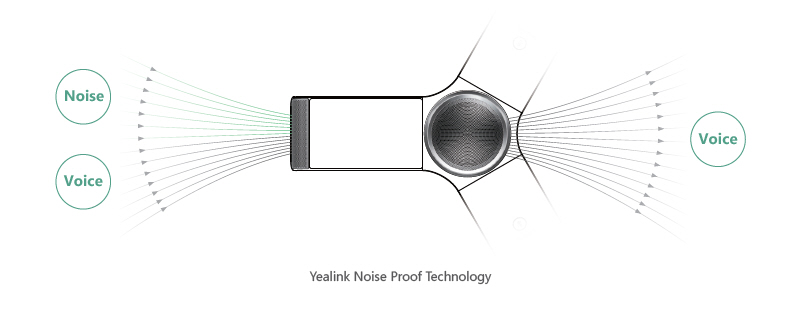Introduction
In today’s fast-paced digital world, communication is key, especially in educational institutions. When it comes to enhancing communication in schools and universities, the technology behind VoIP (Voice over Internet Protocol) phones stands out as a game-changer. With their ability to integrate voice calls with internet technology, VoIP Phone Systems have revolutionized how schools interact with students, staff, and parents.
Imagine a bustling university campus or a busy school filled with students eager to learn. Now envision these institutions equipped with modern VoIP Phone Systems that facilitate seamless communication. This article explores the myriad ways VoIP phones enhance communication in educational settings, addresses common questions about their functionality, and provides insights into their benefits and challenges.
VoIP Phones in Education: Enhancing Communication in Schools and Universities
The integration of VoIP Phone Systems into educational environments is not merely an upgrade; it's a transformation. By using internet connectivity for voice communication, schools can reduce costs while enhancing the quality of interaction among faculty, https://jsbin.com/ students, and parents.
What is a VoIP Phone System?
A VoIP phone system allows users to make voice calls using broadband internet instead of traditional phone lines. This technology converts audio signals into digital data packets which are then transmitted over the internet. It’s like sending a voicemail but in real-time!
How Does a VoIP Phone System Work?
Conversion of Voice to Data: When you speak into a VoIP phone, your voice is converted into data packets. Transmission Over Internet: These packets travel over high-speed internet connections. Reconversion to Audio: At the recipient's end, the data packets are converted back into sound.By utilizing existing internet infrastructure, schools can significantly cut down on telecommunication costs while improving call quality.
Benefits of Using VoIP Phones in Education
1. Cost Efficiency
One of the most compelling advantages of deploying VoIP Phone Systems in educational institutions is cost savings. Traditional phone systems often come with hefty installation fees and ongoing maintenance costs. In contrast:

- Lower Call Rates: Long-distance calls are cheaper with VoIP. Reduced Hardware Costs: There’s less need for extensive hardware setups.
2. Enhanced Flexibility
VoIP technology allows for greater flexibility during teaching hours or administrative tasks:
- Mobile Access: Staff can take and make calls from any location. Multiple Device Integration: Calls can be routed through various devices like smartphones or laptops.
Challenges of Implementing VoIP Phones in Educational Institutions
While there are many benefits to using VoIP Phones in Education: Enhancing Communication in Schools and Universities, there are challenges too:

1. Dependence on Internet Connectivity
VoIP relies heavily on stable internet connections:
- If there’s poor network bandwidth or outages, communication becomes challenging. Educational institutions must invest in robust network infrastructure.
2. Initial Setup Costs
Though long-term savings are significant, initial setup costs can be daunting for some institutions:
- Licensing fees for software. Training staff on new systems.
Key Features of Effective VoIP Phone Systems for Schools
Here are some essential features that make certain VoIP Phone Systems particularly suitable for educational environments:

1. Call Routing Options
This feature enables incoming calls to be directed to specific staff members based on availability or expertise—an invaluable tool for busy school offices.
2. Conference Calling Capabilities
Facilitating meetings among teachers and administrators becomes simpler with integrated conference calling options available through various platforms.
Integrating VoIP Phones with Other Educational Technologies
Integration is crucial! By linking VoIP systems with other technologies such as Learning Management Systems (LMS), schools can enhance functionality across platforms:
- Notifications about class schedules. Emergency alerts sent directly via phone calls.
FAQs About VoIP Phones in Education
1. What are the main advantages of using a VoIP Phone System in education?
Using a VoIP Phone System offers cost savings, increased flexibility, ease of integration with other technologies, and improved communication between educators and students.
2. Are there any drawbacks to implementing a VoIP system?
Yes, potential drawbacks include dependence on reliable internet connectivity and initial setup costs associated with hardware and training needs.
3. How does call quality compare between traditional phones and VoIP?
Generally speaking, call quality can be superior with modern high-bandwidth connections compared to traditional landlines; however, it heavily depends on internet speed.
4. Can students use school-provided VoIP phones?
Typically yes! Many institutions provide access points for student use during office hours or guided sessions where communication may enhance learning outcomes.
5. Is it easy to set up a VoIP system?
Most modern systems come equipped with user-friendly interfaces that simplify setup; however technical support may be required during initial configuration stages especially if integrating multiple features at once!
6. How secure are communications made via a VoIP system?
Security varies by provider; however many reputable services employ encryption protocols ensuring sensitive information remains protected from unauthorized access.
Conclusion
VoIP Phones in Education: Enhancing Communication in Schools and Universities symbolizes not just progress but evolution within our learning spaces—where every voice matters! As we continue navigating this digital landscape together—educators embracing technology whilst simultaneously empowering students—the impact will undoubtedly resonate far beyond mere conversations held over wires (or signals).
To sum it up: adopting this new-age solution translates directly into richer engagement experiences fostering collaboration amongst peers; leading us all towards brighter futures filled with opportunity! So why wait? It’s time to consider harnessing the power of VOIPs!